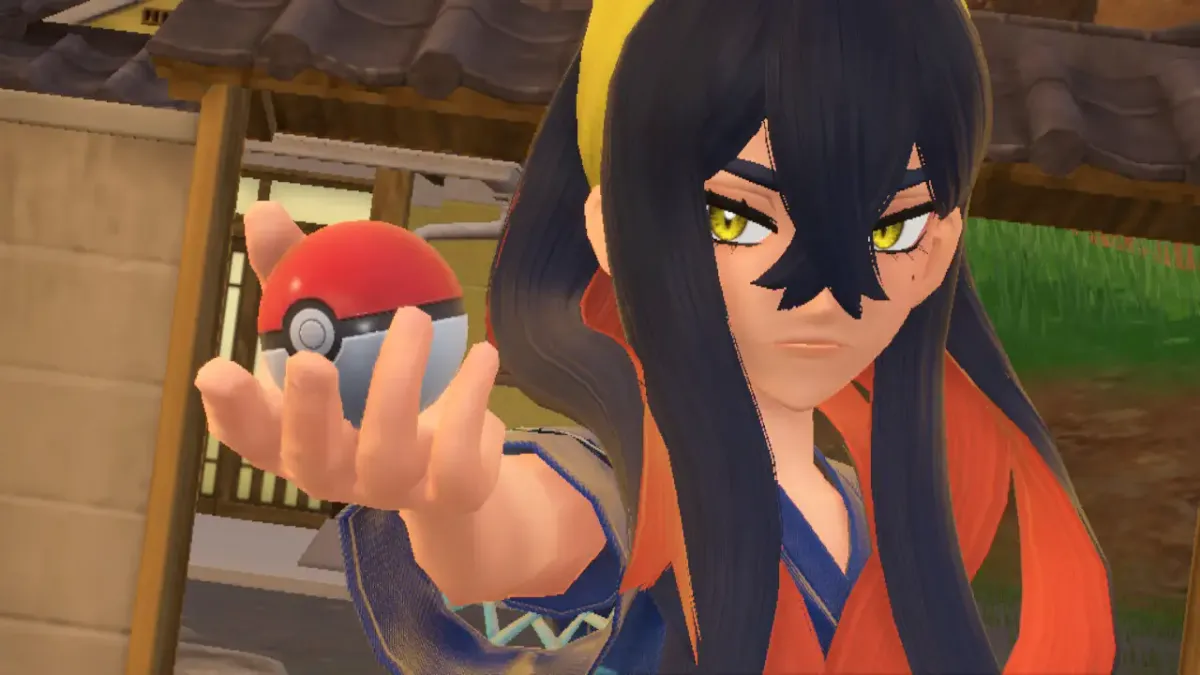
There are a lot of reasons Pokémon is special. Catching and raising a team has a feeling of bonding you just don’t get in Shin Megami Tensei or Dragon Quest Monsters. The world is cozy and has new discoveries everywhere. The games themselves foster community and collaboration like nothing else out there. However, there’s been a noticeable dip in quality since we left the 3DS behind or even just in the jump from 2D to 3D. Pokémon Scarlet & Pokémon Violet were a step in the right direction, breaking up the usual formula with a more freeform structure, but it was less like taking that first step delicately and more like falling face first into something good with a whole lotta bad along the way.. With the first part of the game’s DLC expansion, The Hidden Treasure of Area Zero, Editors Jack Zustiak and David Flynn dive back into the Pokémon world to discover the Teal Mask.
Jack:
The Teal Mask expansion to Pokémon Scarlet and Violet takes you on a field trip to the island of Kitakami. Field trips stand out because they break routine. School doesn’t feel like school if you’re on a field trip; it feels like an event. You’re doing something different than the everyday grind and experiencing something new. Seeing as Scarlet and Violet already featured a whole region to explore, I was interested in how this excursion to new lands would change things up. By the time my trip to Kitakami ended, however, it felt less like a field trip and more like just another day on the Pokégrind.
While I had fun exploring the region of Paldea in the main game, one major weakness of the open world structure became apparent: Paldea functions less like a living, breathing world and more like a giant Pokémon dispenser. Whether you explore a grassy plain or a mountain, the terrain makes little difference to the actual gameplay. The backgrounds feel interchangeable, and in turn, the sense of adventure homogenous.
Upon arrival at Kitakami, I found what amounted to those same grassy plains and mountains. Paldea took inspiration from Spain. Kitakami appears to draw more from Japan. If you were to look in any given direction, however, I suspect that few could tell the difference between the two locations. Only small pockets of decorations will occasionally clue you in that Kitakami is supposed to be a distinct locale with a different culture.
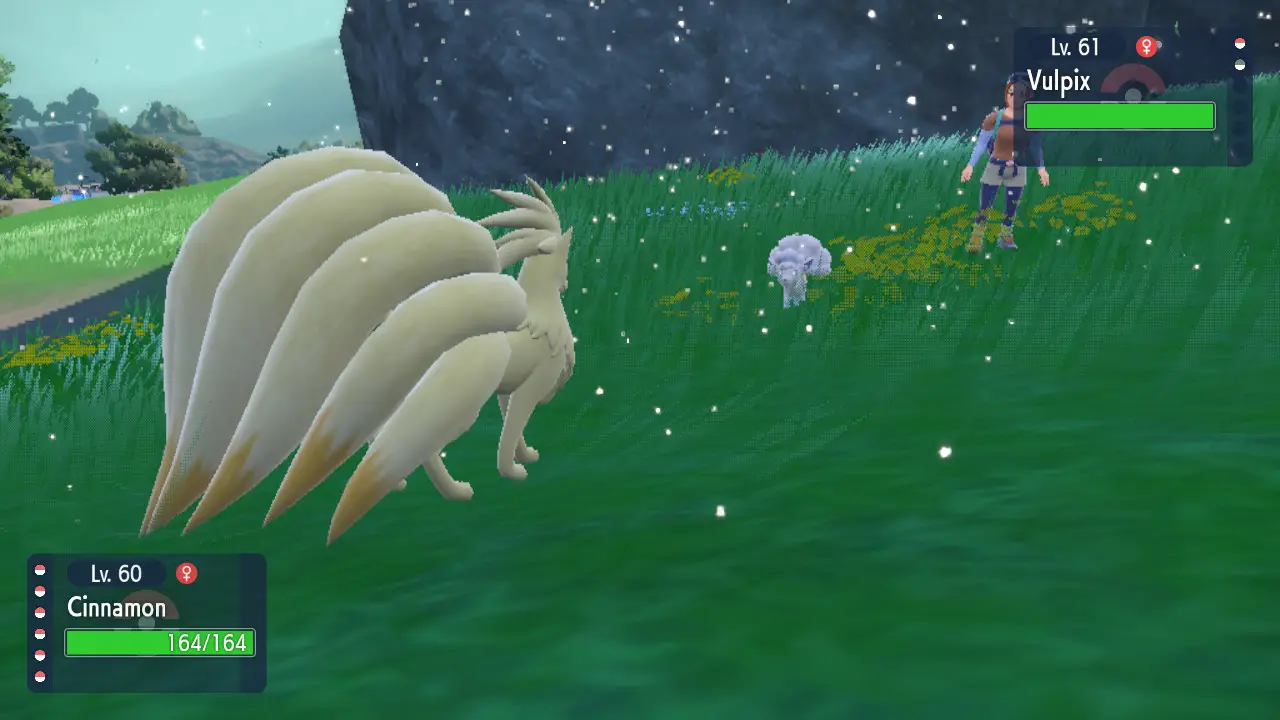
It’s no secret that Scarlet and Violet’s visuals lack detail, and this failure to meaningfully distinguish its new region from the old one represents the worst consequences of that. Kitakami does not feel like exploring a new place; it feels like a part of the existing map suddenly phased into existence. The aesthetics of Kitakami immediately set the tone that “new” and “exciting” aren’t on the agenda for this trip.
That tone carries over into the Pokémon selection. At the end of the day, the highlight of Scarlet and Violet’s gameplay is the experience of catching Pokémon. Catching and collecting monsters provides enough fun to carry you past many of the rougher design decisions. A big part of that fun, however, lies in the sense of newness that comes from collecting. Unfortunately, it’s not just the environment that feels familiar; it’s the Pokémon, too.
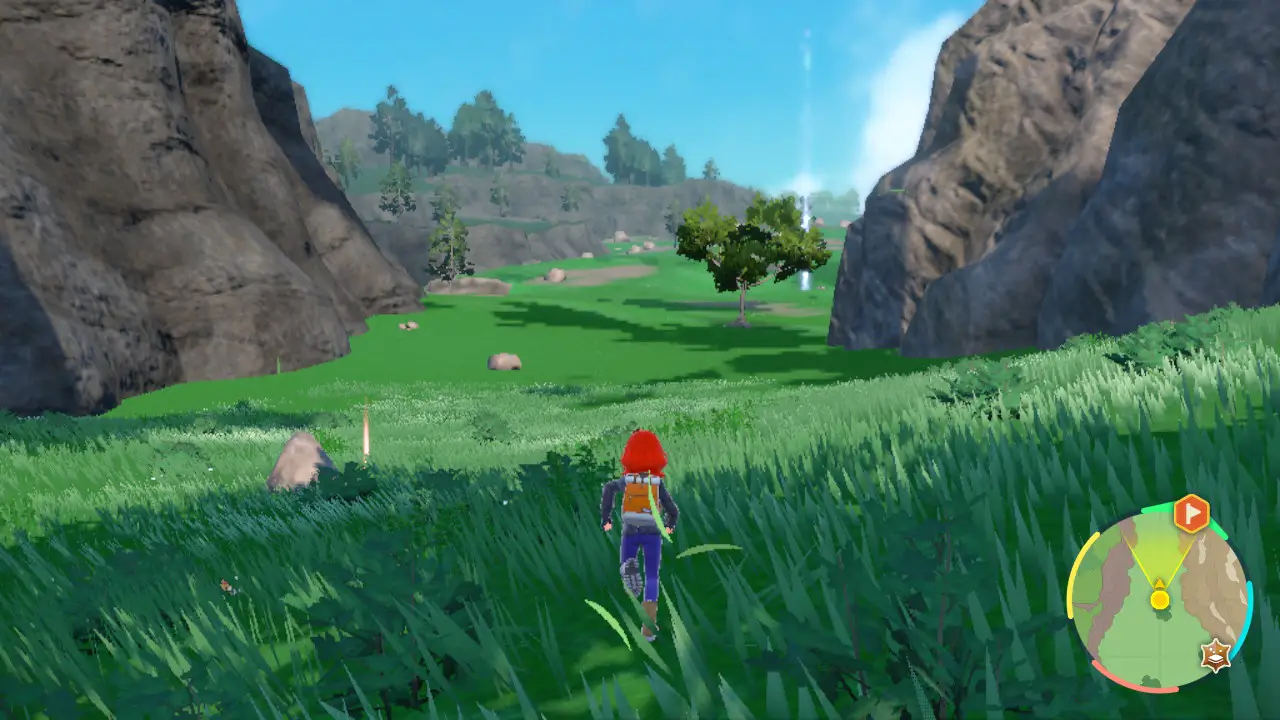
Only a small handful of truly new Pokémon reside on this island. As its real selling point, Kitakami instead brings back roughly a hundred Pokémon from previous games to expand the overall roster of Pokémon available in Scarlet and Violet. I’m not expecting the developers to come up with an entire new roster of Pokémon for DLC, of course, but that compromise makes the whole catching experience relatively unexciting. I have probably caught Ekans and Sandshrew more times than I have caught a cold.
Of course, just because I’ve caught these Pokémon a million times before doesn’t mean everyone has. I could potentially forgive the Pokémon reuse if it were not for a much more fundamental issue. I gradually began to experience a strange phenomenon where I would run up to a new Pokémon to catch it, only to discover that I mysteriously already had it. That shouldn’t be, right? I’m playing this new expansion set in a new region, so it only makes sense that I should be encountering Pokémon that are new to the game. When I opened the Kitakami Pokedex, I discovered the truth. I already had nearly half of the Pokedex filled – not because I am a pro gamer, but because nearly half of the Pokémon on Kitakami already exist in the main game.
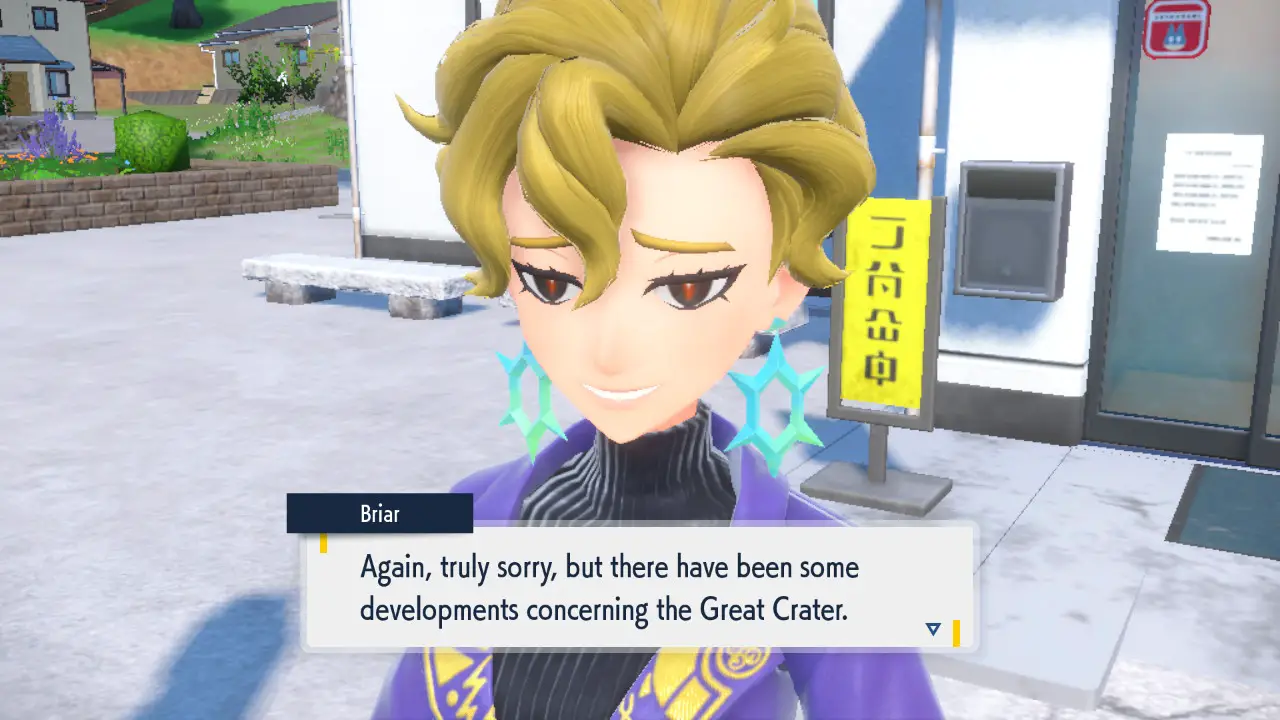
Filling up the island with arbitrarily excluded old Pokémon would be one thing, but littering it with a significant amount of Pokémon already in the game begins to make the whole expedition seem like a waste of time. It almost comes across like the developers are taking advantage of the fact that it’s nearly impossible to keep track of which Pokémon are available in what games following their decision to not carry all Pokémon forward from game to game. Maybe the Pokémon in front of you is new, maybe it’s not. If you don’t have it in this specific game, then what difference does it make?
Kitakami fails to establish an identity in the ways that matter most for a Pokémon game. The environments bring little new to the table and the Pokémon selection brings even less. Even if Paldea suffered from similar environmental troubles, it at least had the progression of your traversal abilities and the main story to fall back on. Your journey here remains relatively static, which becomes especially apparent as the main story of this expansion sends you running back and forth around the map.
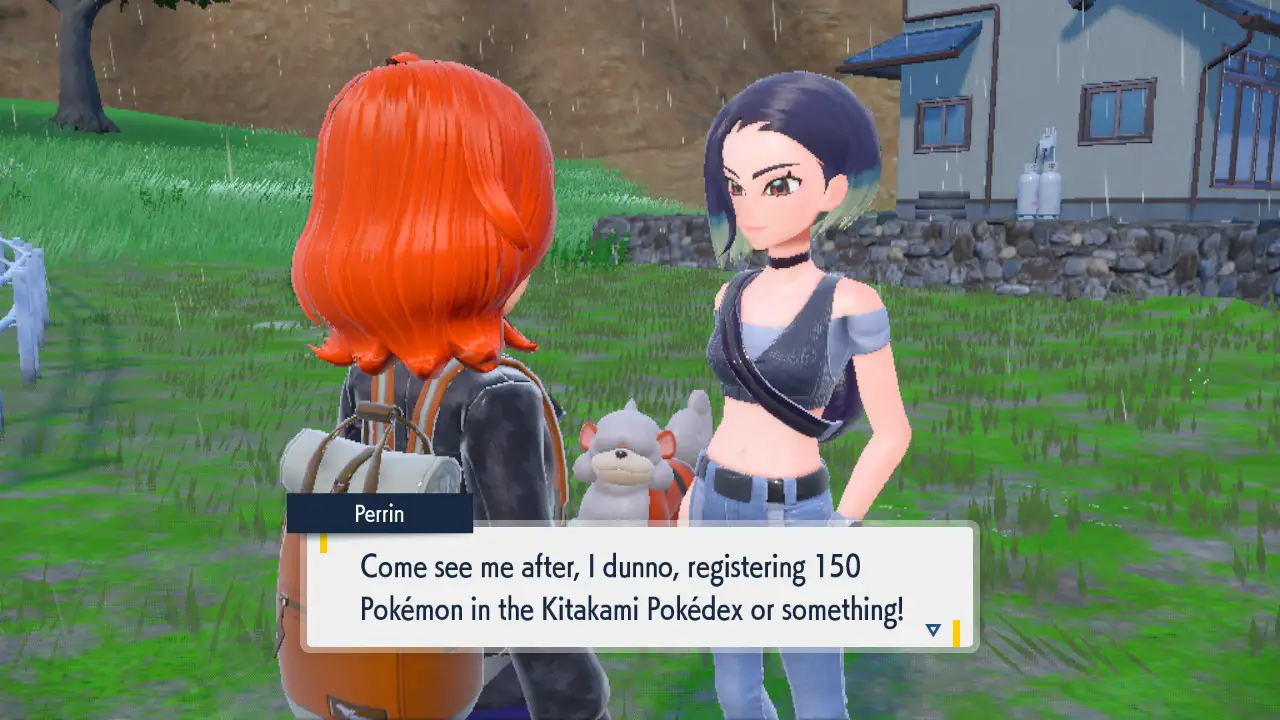
The story revolves around what I can only describe as two very maladjusted children desperately in need of therapy. Instead, what they get are constant Pokémon battles. Their moods swing so rapidly it will give you whiplash. The brisk 3-4 hour timeframe it takes to complete the plot only exasperates the issue. As far as Pokémon stories go, it’s just enough to carry you forward without reaching any of the highs of the main game. The theming and lore behind the Legendary Pokémon of Kitakami at least tell a fun tale.
All tales said and done, however, Kitakami makes for a lame field trip. After the story, you’re left with a handful of smaller quests. Once those are exhausted, all that remains is to go out and catch a lot of familiar Pokémon in a lot of familiar terrains. There’s some fun to be had in The Teal Mask expansion, but it’s the same fun that the main game already offers in abundance. As far as field trips go, I think I would have preferred the zoo.
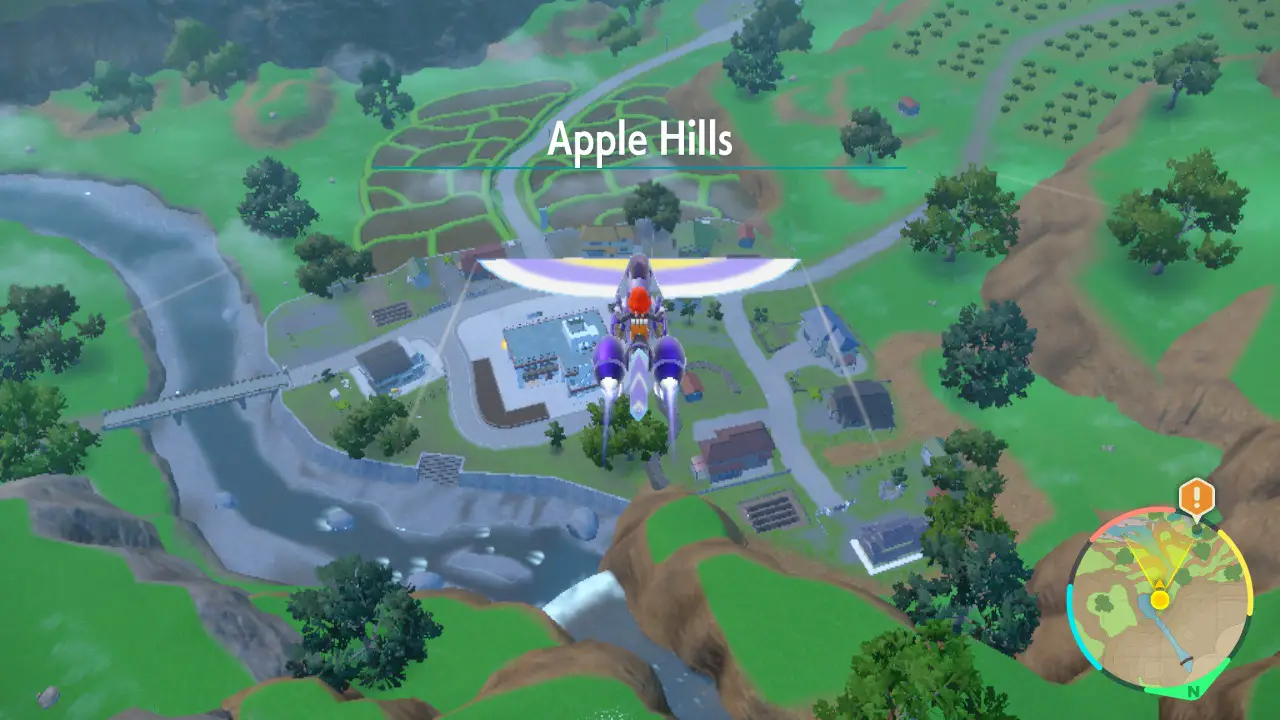
David:
While I enjoyed my trip to Kitakami, it wasn’t really because of the setting, the story, the characters, or even the new Pokémon. What I was enjoying was the core loop of just running around catching Pokémon to check them off in the Pokédex – something I could achieve simply by starting a new game, or popping in an old one, rather than paying $34.99 plus tax. The Teal Mask feels like it’s just killing time while occasionally tossing new ‘mons our way.
You begin the journey by heading back to school, where you’re introduced to the other kids chosen by lottery to visit Kitakami. I fully expected these to be your friends from the main games, but they’re actually not characters at all; they don’t even get names. Regardless, after a plane then bus ride one of them gets sick with the chaperone who is obviously an Act 3 villain asking you to head into town and inform the village leader that you’ve arrived. Of course, I immediately went in the opposite direction towards the shiny things on the ground, and I think it’s safe to assume you did too. Watching a friend stream the DLC, they did the exact same thing. I think this is a symptom of a larger issue with Pokémon, people already know the story isn’t going to be interesting, so why bother? Rather than crafting something compelling, GameFreak seems content to simply put together some familiar Pokémon in a generic location, throw some shinies on top to call it “exploration” and call it a day.
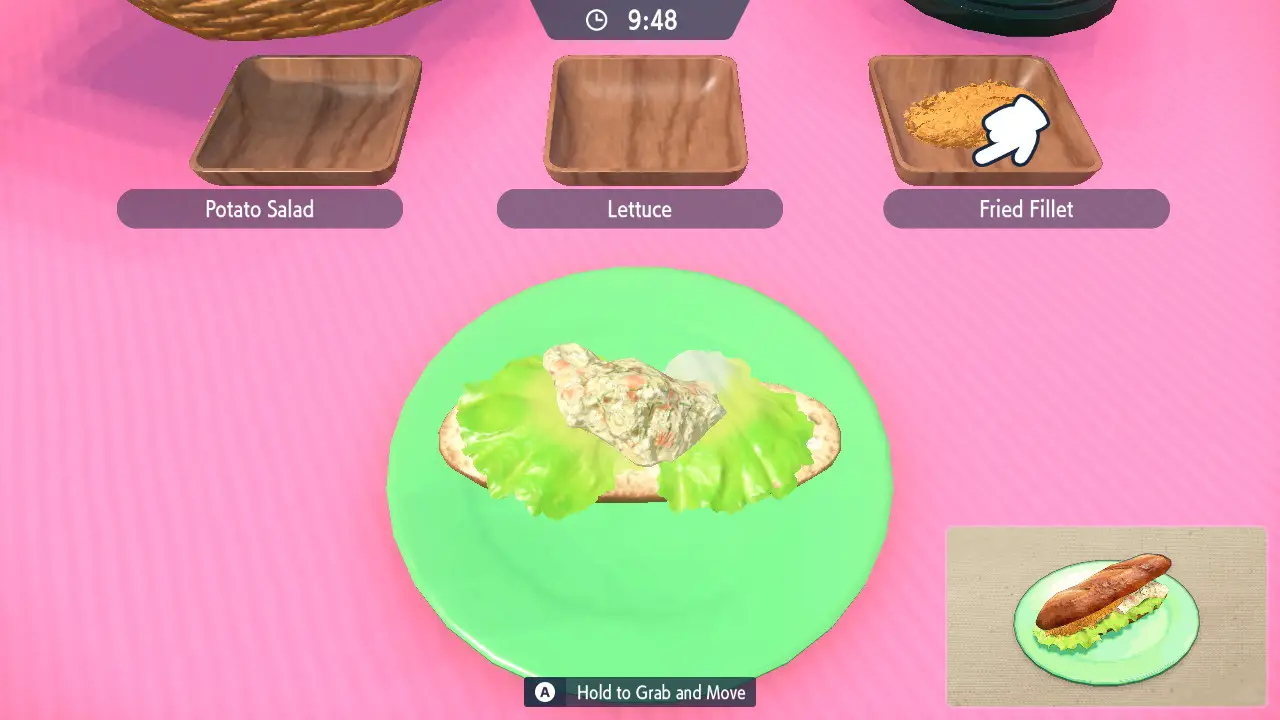
Once you stumble into the village chasing a Whooper, you meet the actual focus of the story: two siblings from Blueberry Academy who grew up here in Kitakami. The elder sister immediately challenges you to a battle for no real reason (get used to that), and you’re paired with the younger brother to find signs around the area telling the story of three Pokémon who defeated an Ogre way back when. You can easily see where this is going, so I’ll stop there, but throughout the adventure you’ll be challenged again and again by the siblings who’s characters can completely change depending on what the plot calls for. Generally, the brother (Kieran) is meek until he’s not, and the sister (Carmine) is unhinged and mean until she’s not.
Most of Kitakami is bland and interchangeable with areas from Paldea, but there are a few notable locations. The village itself has some nice contemporary Japanese architecture. There’s a big shrine just down the path where you can play a balloon popping minigame, and at the top of the mountain there is a lake with cool crystalline formations just under the surface. Other than that, you have the generic grasslands, rocky area, rocky area but with water, and forest.
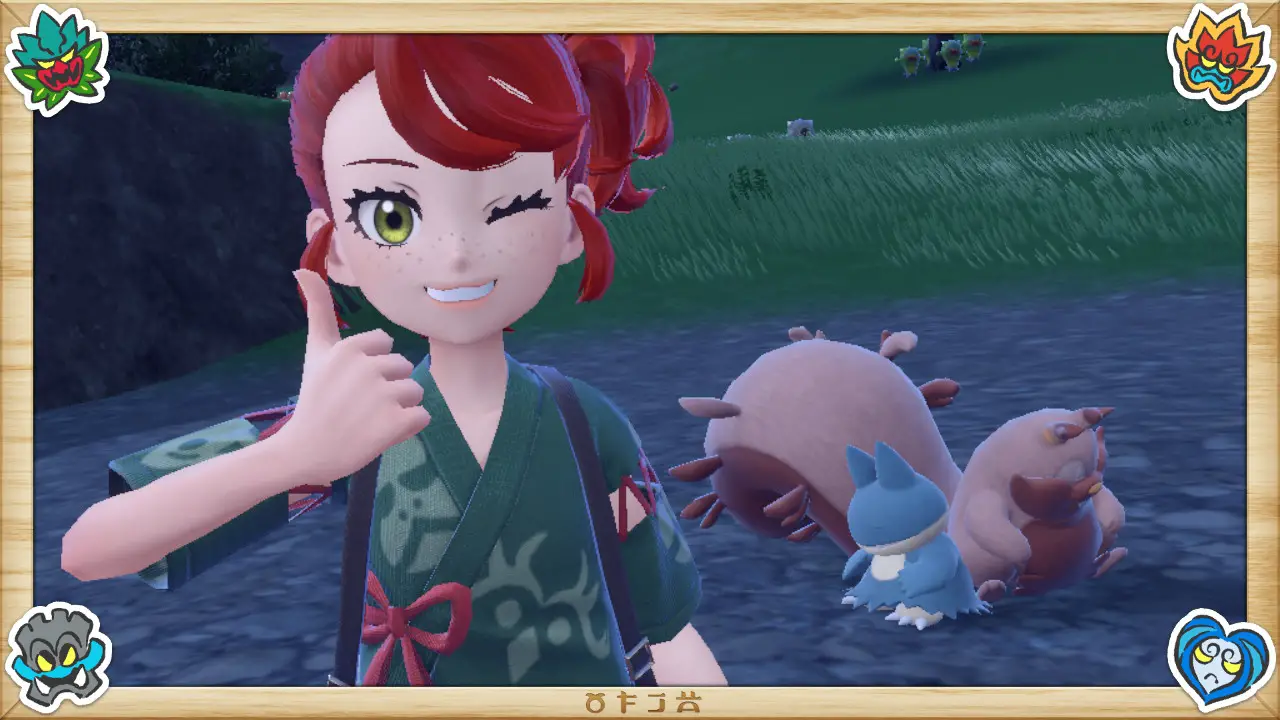
The story itself won’t really take you to all these areas either. The signboards are strewn in random places, but once you’re done with that you’ll essentially be running back and forth between a house in the village and the shrine for a few hours watching cutscenes. I did end up liking Carmine by the end of the DLC (somehow), but I would have liked to see more diverse objectives or locations.
I could ramble on, but in short The Teal Mask is more of the same. It’s not better or worse than the main game, it’s just more of it. This makes it hard to justify its existence as paid DLC, again I could arguably get a more interesting experience with everything this DLC has to offer by playing an older game or the same game again. This is just part one though, so we’ll have to see how it all plays out in the second half.
Pokémon Scarlet The Hidden Treasure of Area Zero Part 1 The Teal Mask
Mediocre
Pokémon Scarlet & Pokémon Violet: The Hidden Treasure of Area Zero Part 1 The Teal Mask offers nothing we haven’t seen before. Kitakami, despite the Japanese theming, feels exactly like Paldea just with different Pokémon. The story is uninteresting and has characters changing completely on a dime, and quite a lot of the included Pokémon already appear in the main game. There’s just not much going on here.
Pros
- The inherent fun of catching Pokémon
- A few interesting locations
Cons
- Barely there story
- Areas feel samey
- Too many Pokémon from the main game

